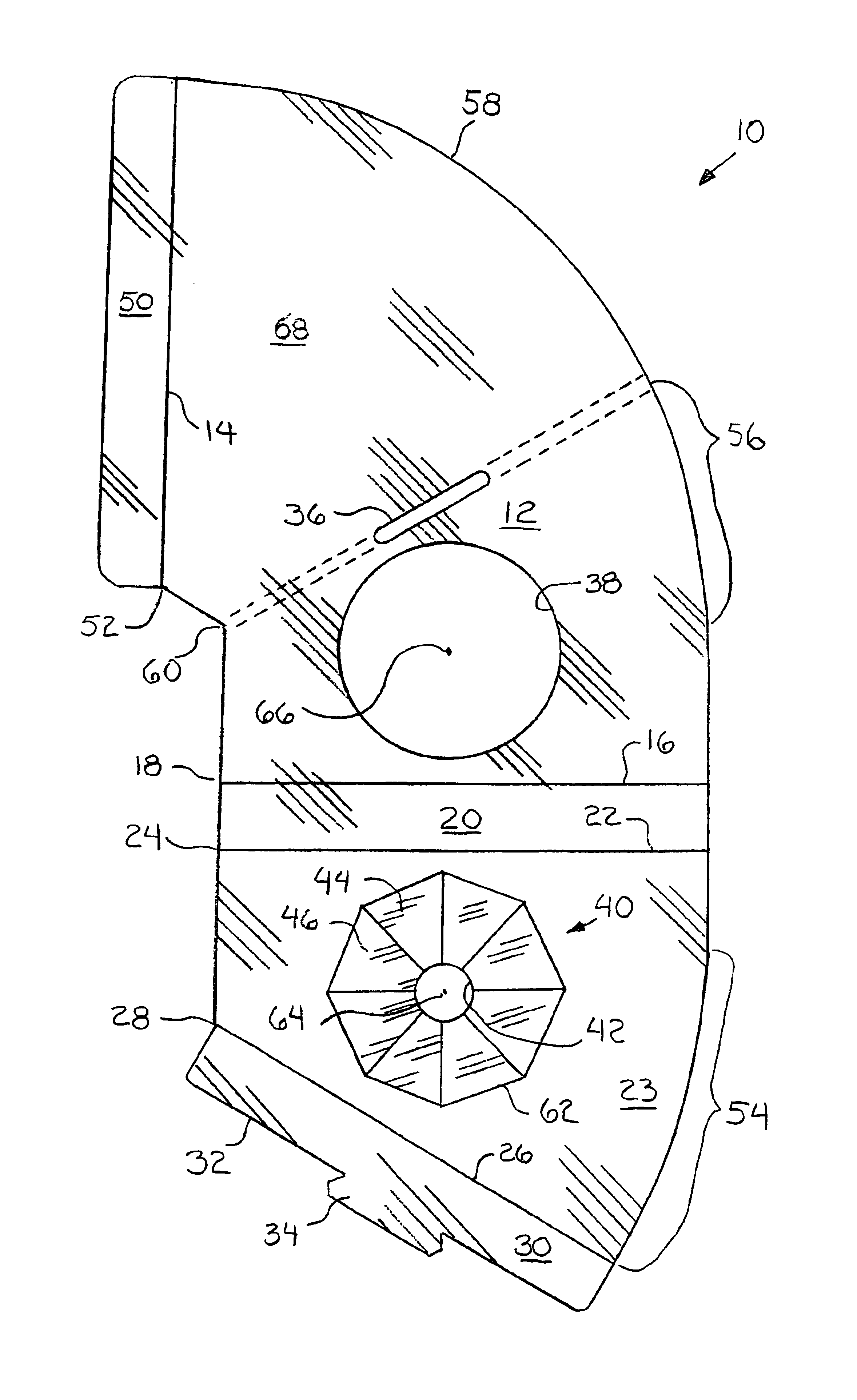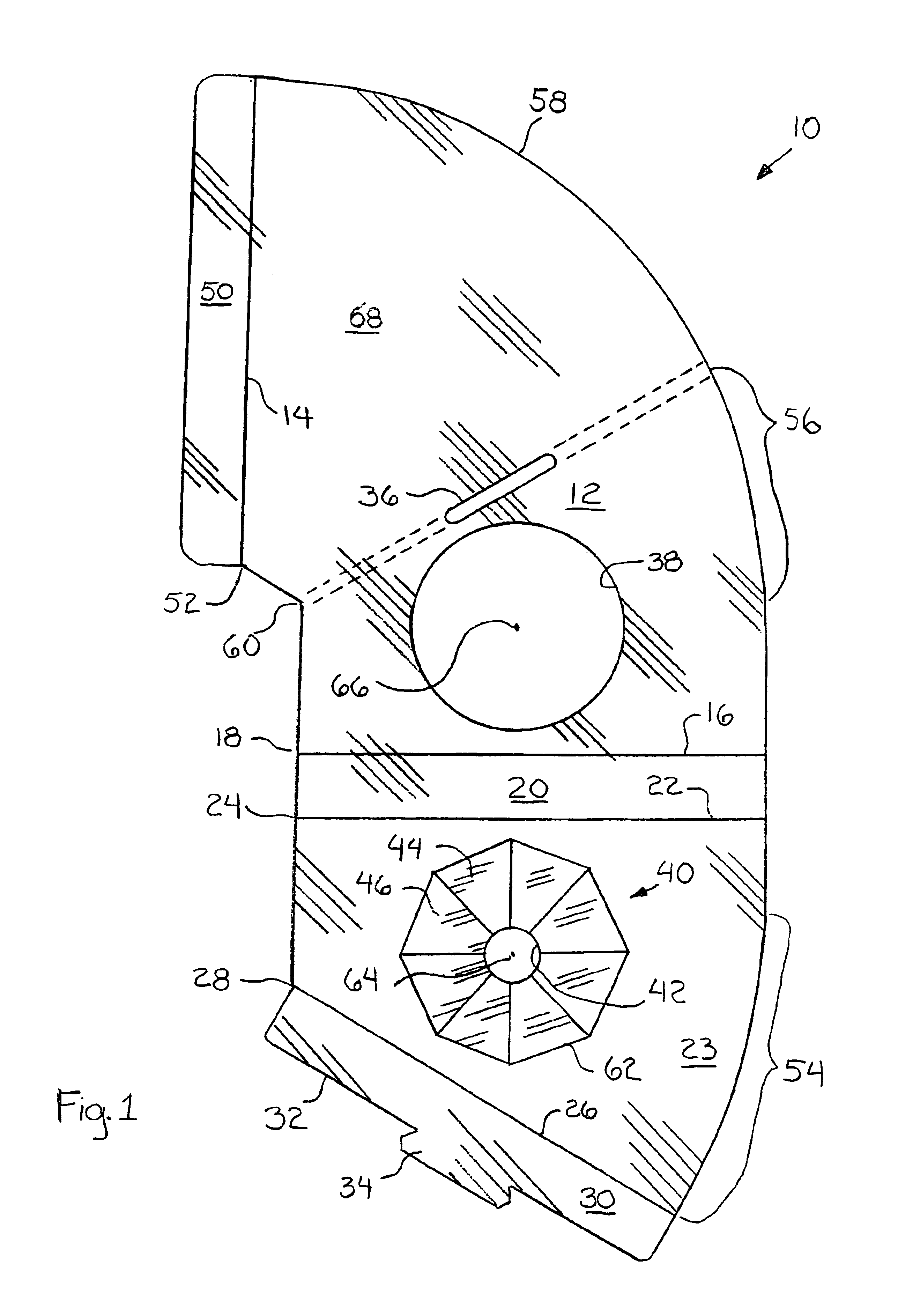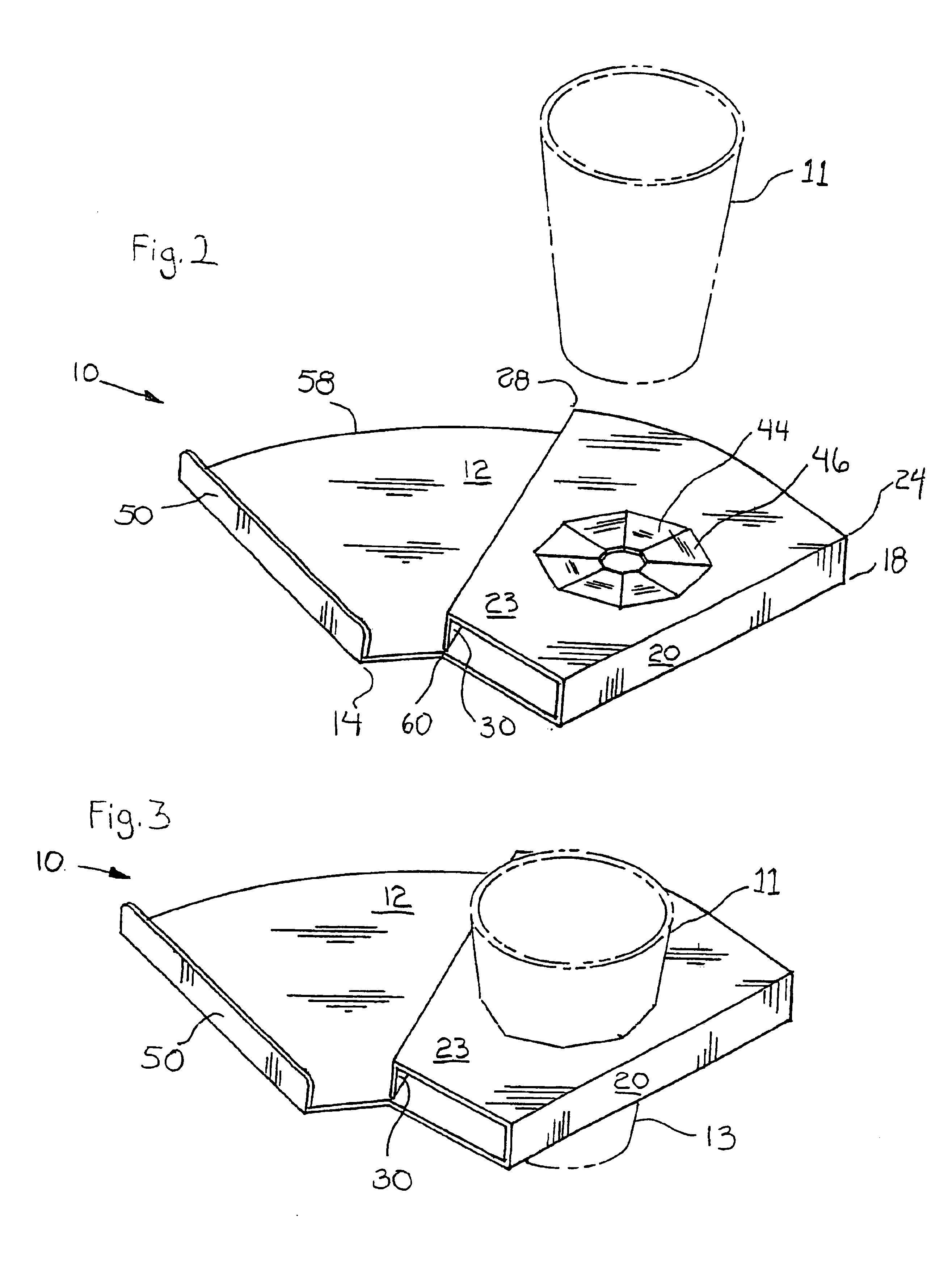[0012]Once assembled and attached or mounted to a beverage container, the food tray can support food items on its upper surface while the user simply grasps the lower portion of the beverage container with one hand. The user grasps a lower portion of the beverage container that projects below the plane of the food tray. With the tray frictionally secured to the container, there is no need for the user to grasp the tray itself, as is required for conventional food trays. The beverage container is preferably grasped just below the food tray so that the hand of the user blocks the food tray from sliding down the wall of the beverage container. In one sense, the food tray is practically invisible to the user whose only required action is to hold the beverage container. The user is thus directly holding and has control over the heaviest part of the
assembly. So long as the food tray is held approximately horizontal, and the material is stiff enough to
resist bending under the weight of the food, the food items on its upper surface will stay there. The user can drink from a
straw while holding the food tray and beverage container with one hand, all without fear of dropping the food. If desired, the food support area can be position by the user so that it extends over and is supported from the underside by resting on the user's arm. Thus, the support of both the tray and container only requires one arm. The other arm remains free for other tasks.
[0013]It is preferable that the food tray be configured so that the food support area is as close to the ports as possible. This reduces the length of the moment arm of the food. Although the food items are generally considerably lighter than the beverage, shortening this moment arm enhances the stability of the food tray and minimizes the amount of material needed to form the tray.
[0014]When in use, one hand of the user is always free to perform any number of tasks, such as consuming the food items, using a napkin, grasping a
handrail, holding children, or the like. Accidents at public events can be avoided as users are free to grasp, for example, a hand rail, when ascending or descending
stairs. Uniquely, the food tray can be used as food is being consumed without the necessity of placing the tray on the user's lap, chair, or the floor. This makes the tray well suited for use in standing events such as conventions, swap meets, markets, and the like. The tray can work to the
economic advantage of concession operators, as potential consumers are enticed to purchase their
food products upon seeing the convenience of the tray being used by others. For instance, fans utilizing the present invention at sporting events can consume the food or beverage with their free hand. Where some surface is available to support the tray, it can be placed on that surface where it will function as a normal food tray. In this situation the food tray serves its unique function when the user is carrying it from the food
pickup point to the table or other support structure. In addition, since the bottom portion of the container protrudes through the tray, the tray is extremely well suited for use with chairs having beverage ports integrally molded into the armrests, as are found in many movie houses or theatres.
[0015]The final
assembly is done at the point of use, so the food tray is conveniently shipped and stored flat. Shipping and storage are thus very economical. The tray is extremely economical to manufacture as it utilizes a minimal amount of flat stock material. The structural strength for the fully assembled (folded) food tray is primarily provided by the beverage container as it protrudes through the two spaced apart ports in the tray, and the stiffness of the food support member. The stiffness of the material prevents the food tray from bending under the weight of the food items. When the beverage container engages both spaced apart ports it imparts rigidity to the assembled configuration. A sheet of material is considered to possess the requisite stiffness if it does not bend significantly under the weight of the intended
food item. The purpose in using a stiff material is to keep the food from sliding off of the food support area by reason of the support deflecting enough from the horizontal to allow the food items on it to slide off.
[0016]The nature of the sheet of material is that it is rigid or stiff rather than flexible. Corrugated
cardboard is, for example, a suitable material for use as the stock material from which the food tray is formed. It is a lightweight, inexpensive composite that is stiff enough so that it will not bend or flex to any significant degree under the weight of the intended food items. The configuration according to the present invention is such that the tray only need structurally support the lightest load, that is, the food items, and not the beverage. This significantly minimizes the amount and strength of material necessary for the tray, thereby minimizing its cost. Production costs are also thereby reduced.
[0017]Two spaced apart ports in approximate registry with one another are used in the food tray to provide
structural stability and strength. The ports are configured so as to accept variously shaped beverage containers therethrough, such as, for example, generally frustoconical containers, cylindrical containers, or rectangular containers. Preferably, the upper port is provided with some structure that serves to frictionally engage the beverage container so as to further stabilize the food tray and the relationship between the food tray and the beverage container. Preferably, the configuration of the food tray is such that the container is frictionally engaged with both the upper and lower ports.
 Login to View More
Login to View More  Login to View More
Login to View More 


